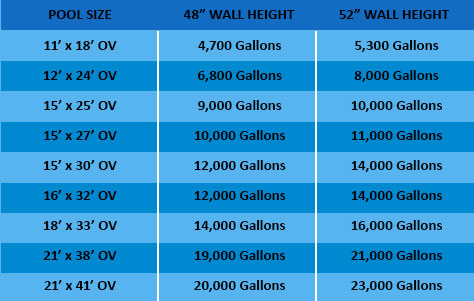How much
shock you should use depends on how large your pool is, why you are shocking your pool and what type of shock you’re using. You should always check the amounts recommended on the bag, but here is a rough estimate to base your measurements on:
To boost your chlorine levels, we recommend ½ lb — or ½ of a bag — for every 10,000 gallons of water.
If your water is cloudy, we recommend 1 lb — or 1 bag — for every 10,000 gallons.
For treating algae, we recommend 2 to 6 lbs — or 2 - 6 bags — per 10,000 gallons depending on the severity of the algae. The greener and darker the water, the more shock you should add. If you use a stronger shock, you may not need to use as much.
[Shop All Shock]

 YOU ASKED
YOU ASKED When should I shock my pool?
[open]
When should I shock my pool?
[open]

 Can I shock my pool to fight algae?
[open]
Can I shock my pool to fight algae?
[open]

 What type of shock should I use?
[open]
What type of shock should I use?
[open]

 How much shock should I use?
[open]
How much shock should I use?
[open]

 How many gallons does my pool hold?
[open]
How many gallons does my pool hold?
[open]



 Do I need to have a certain pH balance to shock my pool?
[open]
Do I need to have a certain pH balance to shock my pool?
[open]

 Are there any safety practices I should follow?
[open]
Are there any safety practices I should follow?
[open]

 SHOCK
SHOCK
 Understanding Chlorine
[open]
Understanding Chlorine
[open]

 Chlorine vs. Chlorine-Free Shock
[open]
Chlorine vs. Chlorine-Free Shock
[open]

 Shock, Super Shock & Mega Shock
[open]
Shock, Super Shock & Mega Shock
[open]

 WE RECOMMEND SHOCK
WE RECOMMEND SHOCK